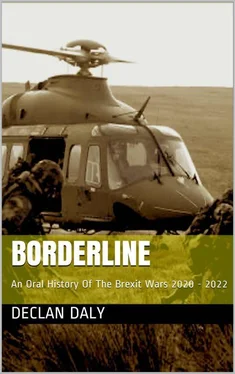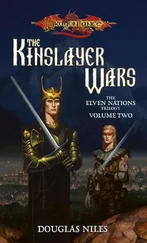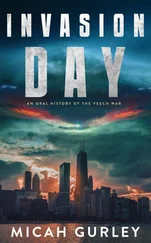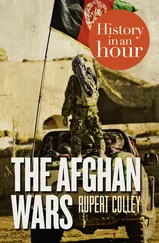These ideas originated when I was told, while still serving in the Irish Air Corps, that I would be putting together a new block of lectures for the air power module of the Command and Staff course in the Defence Forces Training School. This is the course required for Commandants in the Defence Forces to advance to Lieutenant Colonel, it lasts for about ten months and is fairly intense. To put it in perspective, students are required to complete a civilian Masters while also doing full days and nights of purely military studies. Faced with that, I left the Air Corps. The End.
Just kidding. A block of lectures on such a technical subject runs the risk of hitting the death by powerpoint mark very quickly. You put endless streams of information on the screen and watch everyones eyes roll in their heads. To get around that, I decided I would try to go for scenario based lecturing – create a series of ever escalating events that needed airpower support and say to the students 'How do you plan that operation?' At least it would be more interesting.
Nevertheless, I did actually leave the Air Corps before I had to do any of that, but the ideas still bounced around a bit and changed shape. Looking around at some of the public conversation on Brexit and the Defence Forces in general, I decided why not? If there's a message in the book at all, it's that any future Brexit outcome should also include a real and critical assesment of what it means for Irelands ability to provide for the publics security. Like it or not, it's a real thing that requires investment and attention on an ongoing basis.
My apologies to more or less everyone in Northern Ireland, which is reduced mostly to background noise in the book, despite being where most of the actual impact of a conflict would be felt. I was trying to not give the characters or the narrator any more insight or knowledge than they would actually have and this precluded a more diverse set of voices.
Finally, if you liked the book, please leave a review on Amazon or Goodreader, tweet about it or just recommend it to someone else. For independantly published books like, that's how they get read and your help is graciously received.
Declan Daly Sept 2020
MEDEVAC: Flying the Irish Air Corps’ HEMS Mission
Commandant Declan Daly (Ret’d)
Author’s note:
The whole idea behind properly writing down my experience of flying on EAS came after talking to Corporal Mick Whelan, who was collecting recordings for the DF Oral History project. This records the experiences of individual members of the Defence Forces, of all ranks and roles, so that future historians will have something to go on that is more colourful, insightful and powerful than mere official records. I write some of those official records and it would be fair to say they are somewhat stripped of the human touch. The beauty of the oral history collection is that the Airman’s story is just as important as the General’s. It gives, or will give, a researcher a chance to cross reference the many lived experiences of an event or service against the more staid official records and thus allow a history of our time to be more nuanced and informed. It also gives the serviceman or woman their own voice on the topic – no one will have to guess or interpret what you were thinking if you tell them yourself. For any Defence Forces service member, of any rank, that hasn’t taken the chance to give an interview to the project, I can only recommend that you do. It’s not only worthwhile for the project, it’s a very interesting thing to do for yourself and makes your story part of the history.
When I interviewed with Mick, I talked at length about EAS amongst other parts of my service,but came away feeling a bit frustrated as if I’d only scratched the surface. I was also struck that what I considered entirely normal, were things that other people might see as the most interesting part of a story. As a pilot, I would be taken in by the technical aspects, whereas Mick would come back to a topic frequently and ask ‘How did you feel about that?” As a result, I’ve tried to include a bit of that side of things here, and tried to be a bit more expansive than ‘I felt like I was at low level in bad weather’.
Any reader will notice that the people essentially missing from what I’ve written here are the patients themselves. The reason for this is down to patient confidentiality. We come across people on what may be the worst, or even last, day of their lives and I don’t think it would be fair of me if I capitalised on that. I’ve tried as much as I can here to de- identify peoples’ flights with us as much as I can (if you think a story about a patient with heart trouble going into Galway is about you, it’s probably not I’m afraid, I’ve flown hundreds of those tasks and the service has flown thousands). There is one glaring exception to this and although no names are mentioned, I hope the families involved can accept that I have included that particular story to show how some tasks can cut through all the personal defences you may build up. Patient confidentiality also explains why some of the more ‘spectacular’ cases are not included here – it’s not that they weren’t noteworthy, it’s just that one or two key descriptors on those jobs would certainly put that patient’s identity in no doubt.
This is all very much my own experience of EAS. I have tried to explain everyone else’s role and any mistakes or oversimplifications there are mine alone. For any of my colleagues that find themselves reading this, if your name isn’t mentioned, it’s probably because the statute of limitations hasn’t run out yet.
Glossary of barely intelligible aeromedical helicopter speak
EAS brings together people who are military helicopter techs, flying crews and national Ambulance Service clinical crews. These groups share several things in common, a dark humour that is made much worse and more inappropriate by exposure to each other (think Grim Reaper drawing a dead soul with a human bone, on a canvas of black holes, that kind of dark), and a language that is usually considered incomprehensible to those who don’t work with us regularly.
Look, to be honest, sometimes we’re just making up words to sound smart in front of other people, but most of the time, this language forms a verbal shorthand that saves us from having to expand on a concept or situation when time is of the essence. I don’t want this to be a technically driven account, so I’ve tried to minimise the use of EAS jargon as much as I can, but in some places, it has to be used to give any context at all. To make things intelligible, here’s some of the main offending items explained, the rest should hopefully become clear from the main text:
Cyclic: The stick in front of the pilot that controls pitch and roll. Stick goes forward houses get bigger, stick goes back, houses get smaller. Left and right just roll you left and right.
Collective: The handbrake looking thing on the pilots left. This controls the pitch of the blades in the main rotor system (that’s the one over your head) and also demands the right amount of power from the engines to keep those blades turning at the right speed. In the hover it will make you go vertically up and down. In forward flight, pulling it up means faster, down means slower.
Tail rotor control pedals: Also called anti-torque pedals. These control the tail rotor and move the aircraft around in the yaw plane, see further below to find out what that is. They are also used to counter the torque produced by the main gearbox when you dump two jet turbine engines worth of power into it.
POF: Principles of flight, the aerodynamic and mathematical principles that make a helicopter get off the ground. Heli POF is considered by many of our other aviation colleagues to be some kind of dark magic, so we just tell them we sacrifice a chicken on the nose of the aircraft first thing in the morning and, if the omens are good, we go flying.
Читать дальше












